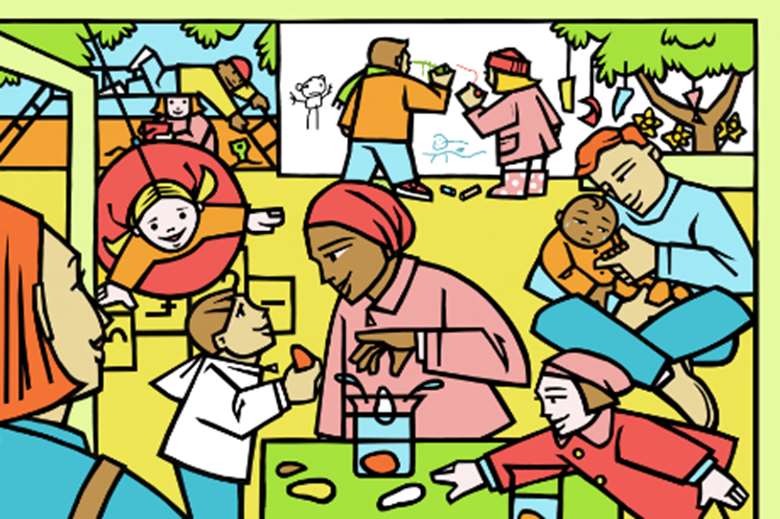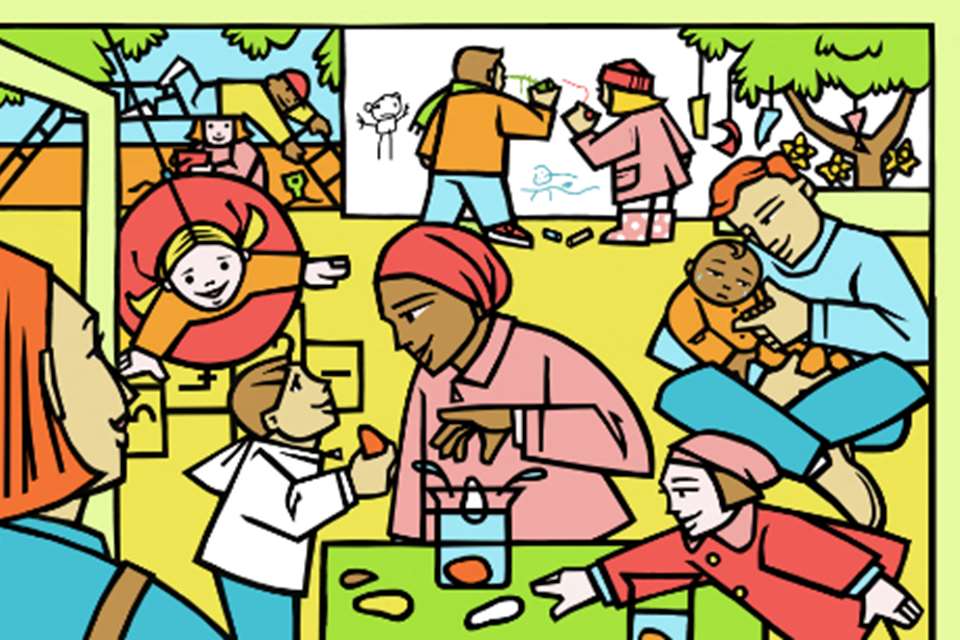Leadership Under the EIF: Continuing Professional Development - On a roll
Annette Rawstrone
Tuesday, June 30, 2020
Annette Rawstrone explains how managers can ensure CPD is effective for both individuals and the whole setting

Continuing professional development (CPD) is the planned, ongoing development of knowledge and skills throughout an early years professional’s working life.
Above all, CPD ensures that you and your team continue to deliver high-quality childcare that directly benefits the children, but there are many other advantages, including:
- gaining new knowledge to deal with new or complex situations
- keeping up to date with best practice, changes in legislation and new research
- greater professional confidence and self-esteem
- helping to keep staff motivated and boost morale
- supporting staff to achieve their career goals
- enhancing parent satisfaction and loyalty.
Under the Education Inspection Framework, rather than just checking how many staff members have attended specific training, inspectors gather evidence of the effectiveness of a setting’s CPD and the impact that it has on children’s well-being, learning and development.
For CPD to be effective, leaders and managers need to actively develop a learning culture within the setting. ‘CPD is much broader than “just going on a training course” – it should reflect an ongoing cycle of maintaining and developing our professional knowledge and skills: a process rather than an event,’ says Sandra Mathers, senior researcher at the University of Oxford and expert in early years pedagogy and professional development.
She adds that CPD can take many different formats. These include training but also mentoring, coaching, peer networking and support, lesson study groups and video mentor groups. Also, do not overlook reading relevant books, publications and blogs or taking part in professional discussions with peers on social media or in the staff room.
Having a plan
Rather than just providing general learning opportunities, it is important to identify what CPD is needed in your setting by being clear about what areas require improvement. Dr Mathers suggests that CPD should be planned as a team on an ongoing basis and be part of a reflective and analytical long-term development plan, rather than going for the ‘quick fix’.
A good starting point is to look at the needs for development:
- What do your children need? Where do your children do well and where do they need additional support – and are the staff equipped to provide that support?
- How strong is your pedagogy and practice? Are there any areas you need to develop as a team, and how do you know? Using reflective and observational tools such as environment rating scales can help to support your planning.
- What does your team need? Identify current staff strengths and opportunities for peer support. Have you made the most of your existing expertise – and investments you might have already made in CPD that has not yet been shared with the wider team?
- Where are your gaps? And where does your team feel their development needs to lie?
Effective investment
Once the areas that need to be focused on have been identified, you will need to then identify how best to improve practitioner knowledge and practice by seeking out the relevant CPD. There is no one-size-fits-all when it comes to this. Funding and individuals’ learning styles need to be taken into consideration – where one person may learn best from researching professional magazines and journals, another could gain more from work shadowing or attending relevant training.
When looking at which programmes, training opportunities or qualifications are available, you should look at the aims, content and learning outcomes to ensure that time and money are spent effectively.
When making decisions about CPD, Dr Mathers advises considering:
- whether your planned approach to CPD is evidence-based. For example, we know that one-off workshops do little to achieve meaningful professional learning and improvement. Research suggests that 20 contact hours or more – over at least two terms – are needed for CPD that ‘aims to achieve deep and sustainable change’
- whether the professional learning will be meaningful and bring embedded, long-term results
- whether the CPD provides both theoretical knowledge and support for transfer into practice
- whether your team will be involved in ‘active learning’, such as professional enquiry, discussion, action research or analysis of child assessment to inform change.
In light of the Covid-19 pandemic, there will be an increased emphasis on remote learning opportunities. When selecting online CPD, Dr Mathers advises that leaders should be just as rigorous in evaluating whether it is likely to be effective as when choosing face-to-face opportunities.
Anecdotal evidence
The impact of CPD needs to be reflected on and evaluated as a team in order to ensure that it is meeting the intended aims, being disseminated effectively and can be shown to be supporting children’s well-being, learning and development.
While staff could keep individual CPD portfolios, Dr Mathers warns against keeping records for the sake of it. ‘A good inspector will not be looking for paper evidence of CPD completed. They will want to know about the setting’s approach to it and whether staff can talk knowledgeably about how their CPD has made a difference – why they undertook CPD in that area, how they came to the decision, how the CPD has helped to develop their knowledge and practice – and how it has impacted on the children,’ she says. ‘In short, evidence of a cohesive, continuous and whole-team approach to CPD.’
Further information
- Nursery World: ‘Training – the right mix’ by Sandra Mathers, https://bit.ly/2Y8NP9f
- Nursery World: ‘Professional development – Proof positive’ by Professor Iram Siraj and Dr Denise Kingston, https://bit.ly/2Cgkv8y
CASE STUDY: Kindred Nurseries
CPD takes a range of forms at Kindred, which has 20 settings across Greater London, Essex and the South of England, from peer support to linking with other sites to share good practice and formal training sessions, depending on the needs of the individual staff members and the setting’s focus.
Staff are often asked to research a specific topic to research, reflect on and then disseminate to the rest of the team during staff meetings in order to keep them abreast of new legislation or best practice. For example, a staff member may prepare a short presentation or quiz on cultural capital.
‘We have found that staff learning is far stronger if they are encouraged to research and find out for themselves rather than us giving them information,’ says head of operations Annie Tierney. ‘It is real, active learning and they have the information to take away and then refer back to during their daily practice. There is a lot of friendly competition in the nurseries and managers set challenges when they see a need, such as finding out more about the importance of tummy time or how treasure baskets can be used effectively.’
Leaders try to use ‘real opportunities’ to upskill staff and train them during the general nursery day, such as inviting the deputy manager to sit in on supervisions. Managers are supported in their learning and development by being partnered by a ‘buddy manager’ at a nearby site. Best practice is also shared between sites to inspire and motivate through a closed Facebook group where staff can upload videos and share research.
In order to promote positive nutrition in the nursery group, a staff member from every nursery has undertaken the PANCo qualification. The training enables staff to gain detailed knowledge, reflect on their current practice and then to lead and support change within the settings.
The nursery group is also in the process of opening up its own training academy so that tailored training can be provided. ‘There will be a home-from-home feel so that it does not feel intimidating,’ says Ms Tierney. ‘Different areas will be set up, such as the book area or home corner so that staff can actually see it in practice and understand what Kindred is about. It brings the learning to life.’
Advice for leaders
- Remember that CPD is not just formal training but is a holistic approach that recognises everyday experiences as learning opportunities.
- As the name suggests, CPD should be about development on an ongoing basis.
- Involve the staff team in using children’s data to plan relevant CPD – think about why you are doing it.
- Consider how learning opportunities will be cascaded to staff.
- Think what changes you have made to your practice as a result of the CPD.
- Audit how the CPD has benefited the children in your setting.





